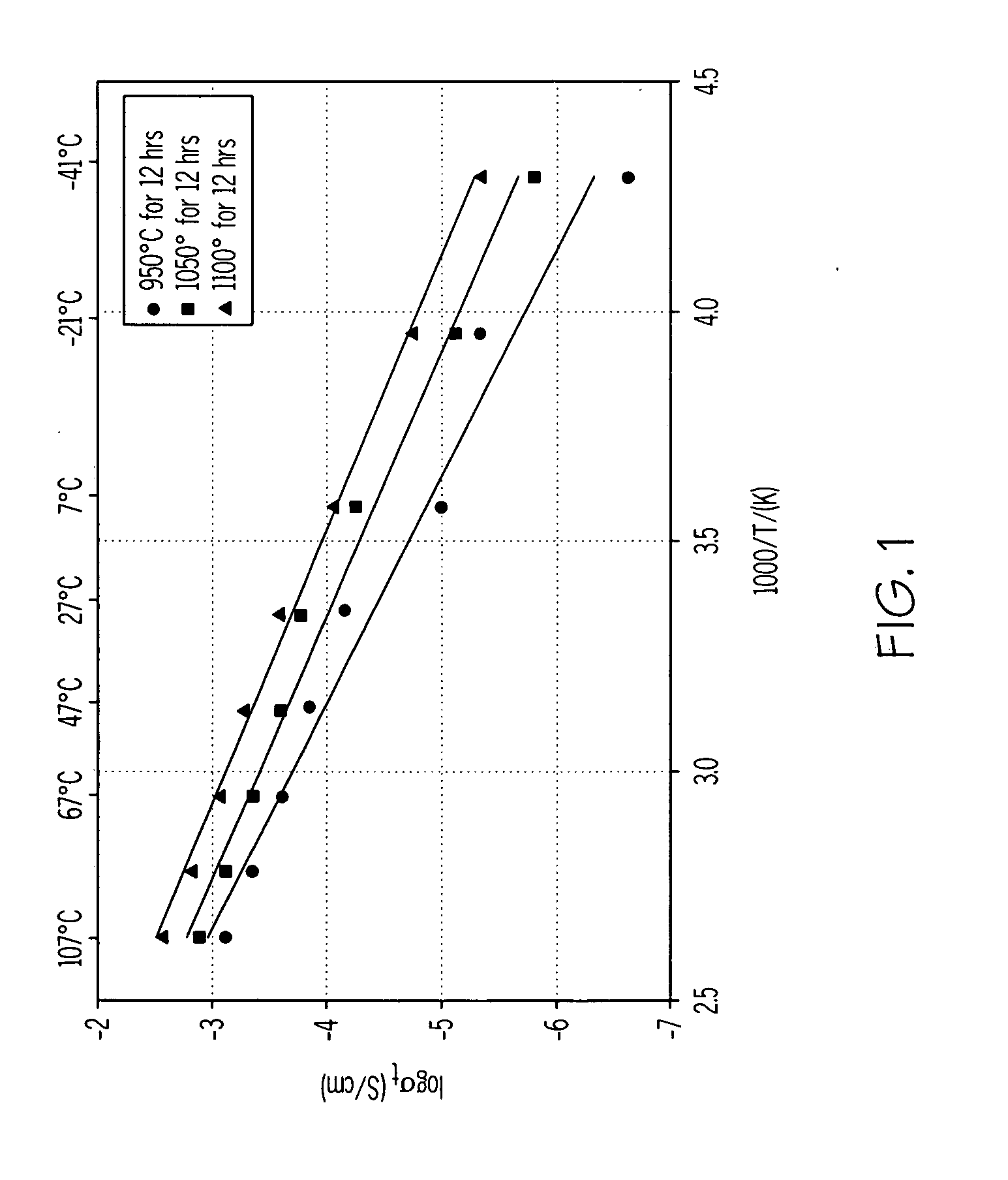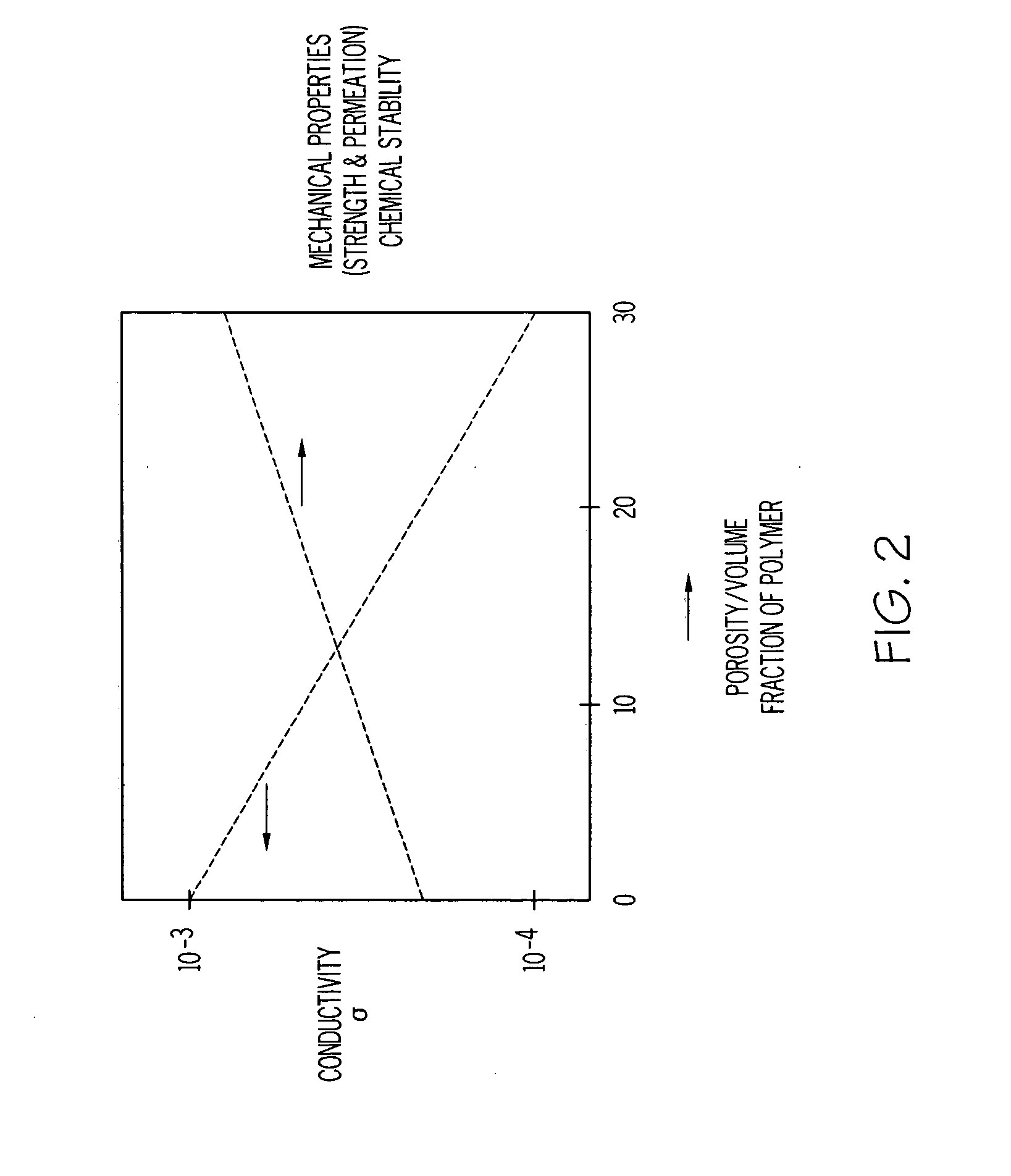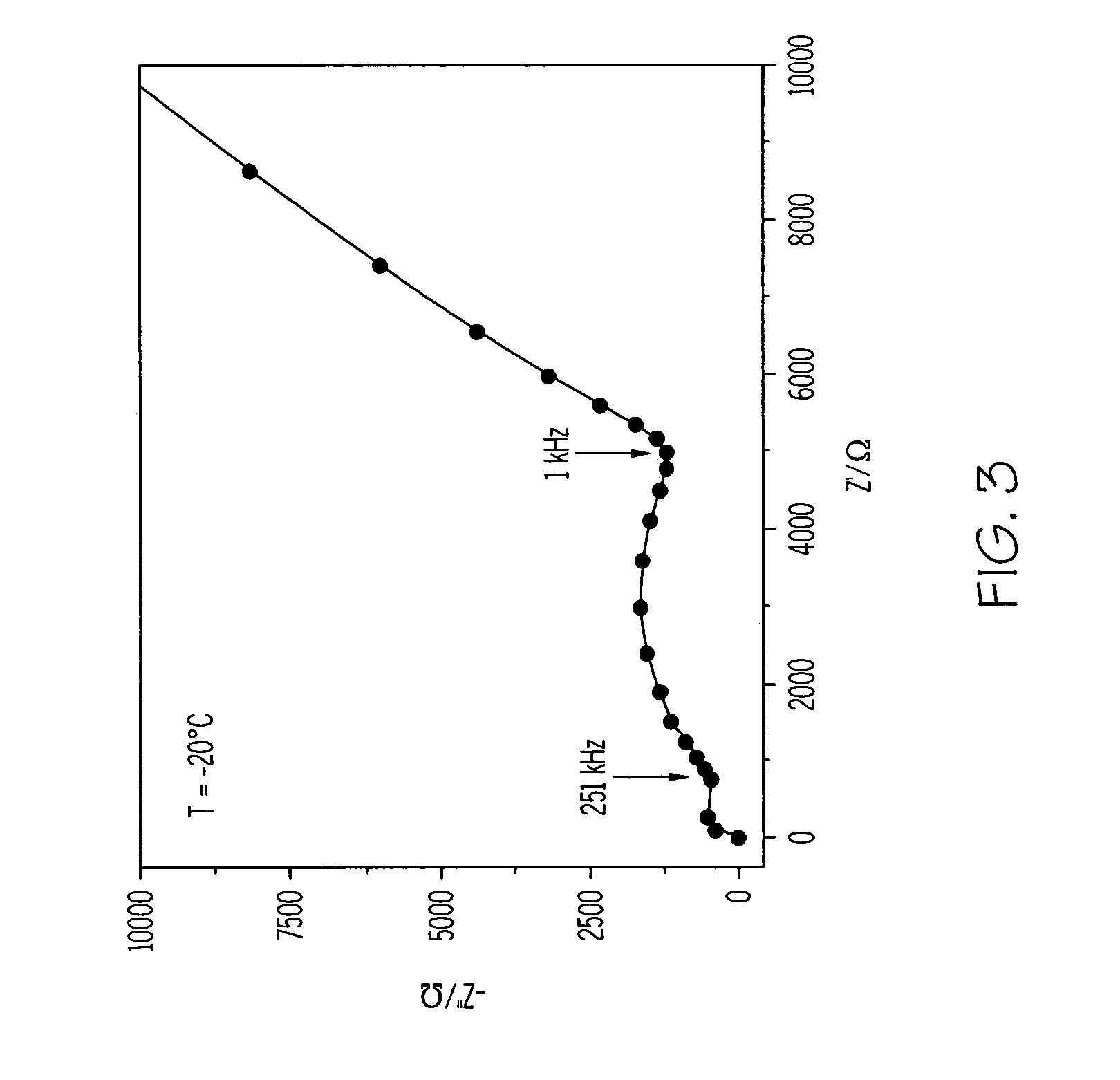Solid composite electrolyte membrane and method of making
- Summary
- Abstract
- Description
- Claims
- Application Information
AI Technical Summary
Benefits of technology
Problems solved by technology
Method used
Image
Examples
example 1
[0031] A glass batch comprising lithium carbonate (Li2CO3), alumina (Al2O3), titanium dioxide (TiO2), and ammonium dihydrogen phosphate (NH4H2PO4) was weighed, mixed and melted in a platinum crucible at a temperature between about 1400 to 1500° C. After melting, the glass was poured onto a stainless steel plate and annealed at 550° C. for 2 hours. The glass was then crushed into chunks, powdered, and screened. The powdered glass having a particle size range of 1 to 75 μm was mixed with fish oil, xylene, and alcohol, and then mixed by tumbling for 24 hours in a glass jar.
[0032] A binder (poly(vinyl butyl)) and a mixture of plasticizers (butylbenzyl phthalate and poly(alkylene glycol)) were then introduced into the glass jar, and the mixture was tumbled for another 24 hours. After a total tumbling time of 48 hours, the slurry was cast onto a Mylar® sheet and dried for 24 hours. The green tape which resulted was cut into the desired shape and size and subjected to burnout and sinterin...
example 2
[0035] A green tape made according to EXAMPLE 1 was sintered at 950° C. for 12 hours. The partially sintered (porous) membrane was then infiltrated with polyethylene to provide water impermeability to the membrane. Polyethylene was dissolved in toluene, and the membrane was submerged in the polymer solution for about 15 minutes. The infiltrated specimen was then removed and dried.
[0036] After infiltration with polyethylene, there was a slight decrease in conductivity of the composite membrane.
example 3
[0037] A glass batch [14 Li2O·9 Al2O3·38 Al2O3·39 P2O5 (mol%)] was prepared comprising the following reagent grade chemicals: Li2CO3 (Alfa Aesar), Al2O3 (Aldrich, particle size 2 (Acros Organics), and NH4H2PO4 (Acros Organics). The chemicals were weighed, mixed, and melted in a platinum crucible. The furnace was initially heated slowly to 450° C. and held at that temperature for 1 hour to release volatile batch components. Subsequently, the furnace was heated with a slightly higher heating rate to 1450° C. and the glass was melted to a homogeneous liquid in about 1.5 hours. After melting, the glass was poured onto a preheated (550° C.) stainless steel plate and pressed by another preheated stainless steel plate. The processed glass appeared transparent and amber-colored. Subsequently, the pressed glass plate was broken into chunks, powdered, and screened for further processing.
[0038] The powdered glass having a particle size range of 1 to 75 μm was dried at 120° C. overnight. The d...
PUM
| Property | Measurement | Unit |
|---|---|---|
| Temperature | aaaaa | aaaaa |
| Temperature | aaaaa | aaaaa |
| Temperature | aaaaa | aaaaa |
Abstract
Description
Claims
Application Information
 Login to View More
Login to View More - R&D
- Intellectual Property
- Life Sciences
- Materials
- Tech Scout
- Unparalleled Data Quality
- Higher Quality Content
- 60% Fewer Hallucinations
Browse by: Latest US Patents, China's latest patents, Technical Efficacy Thesaurus, Application Domain, Technology Topic, Popular Technical Reports.
© 2025 PatSnap. All rights reserved.Legal|Privacy policy|Modern Slavery Act Transparency Statement|Sitemap|About US| Contact US: help@patsnap.com



